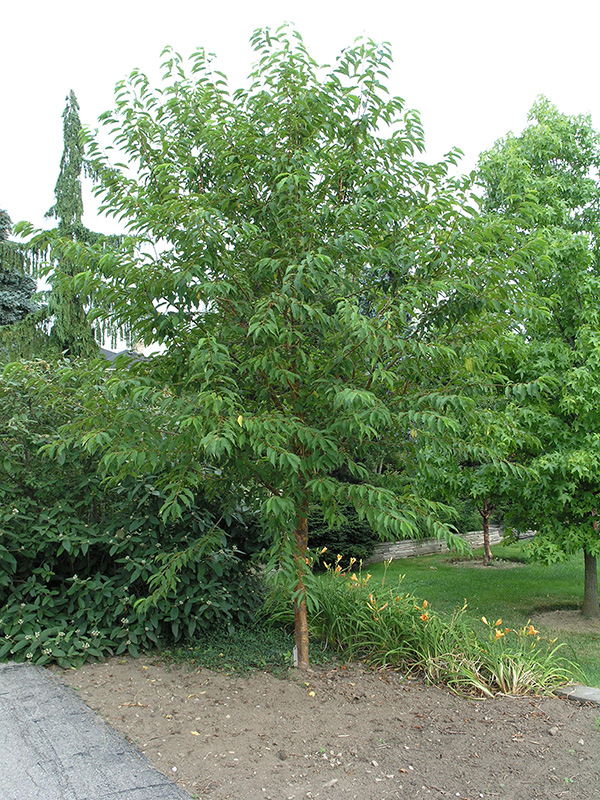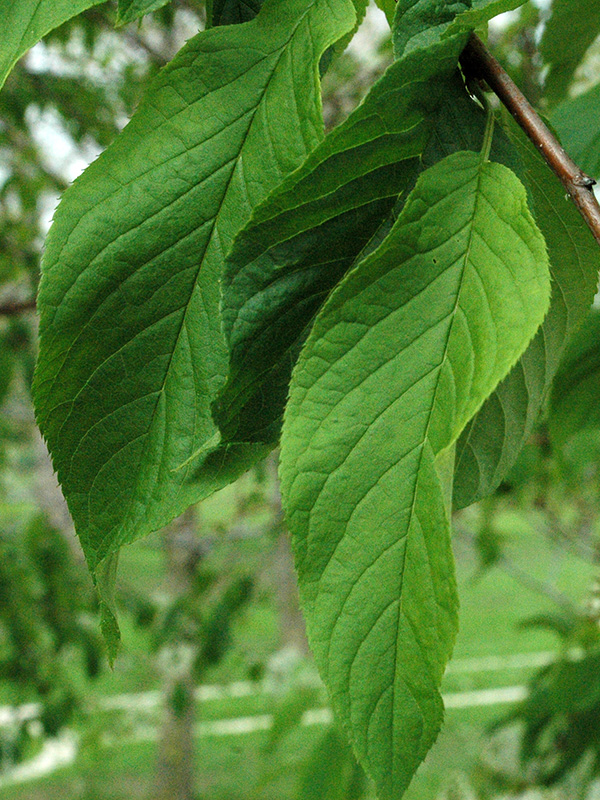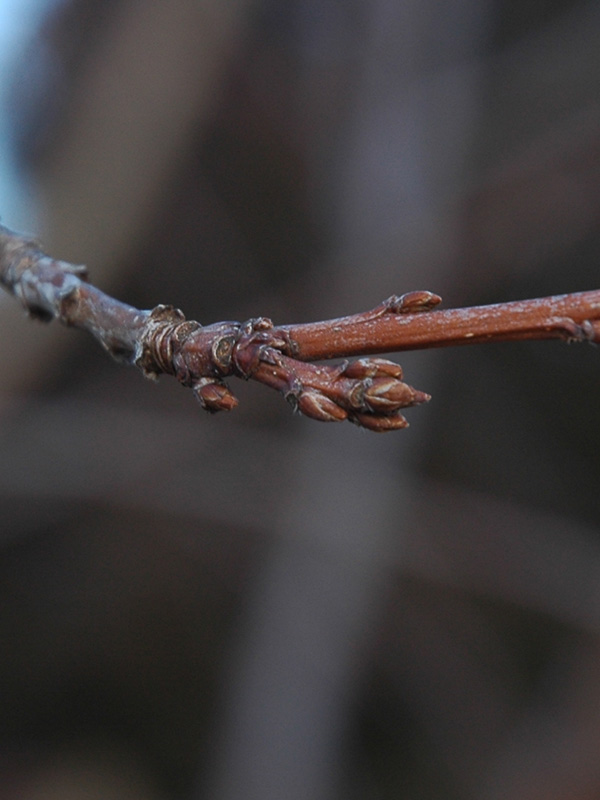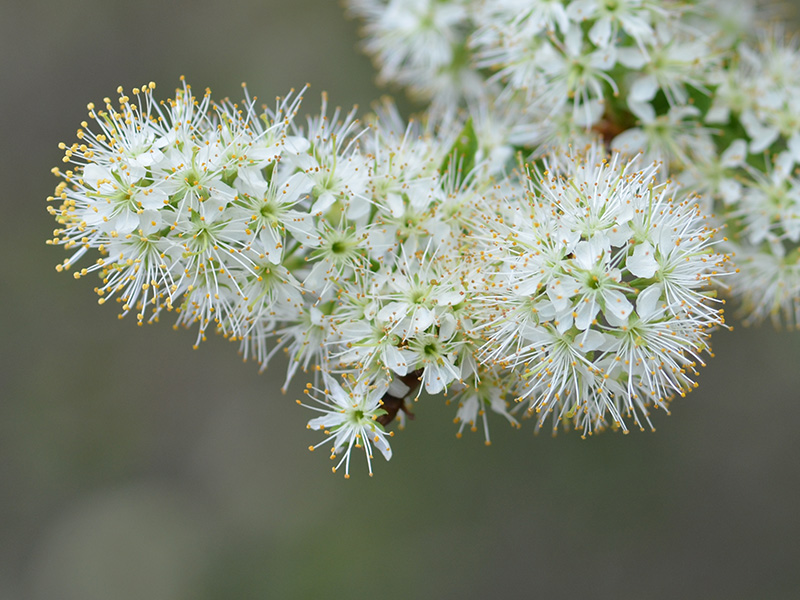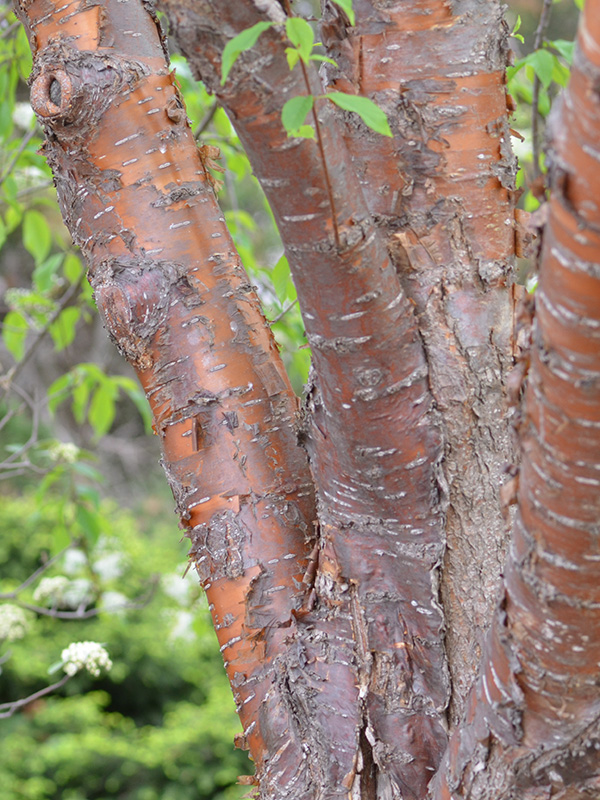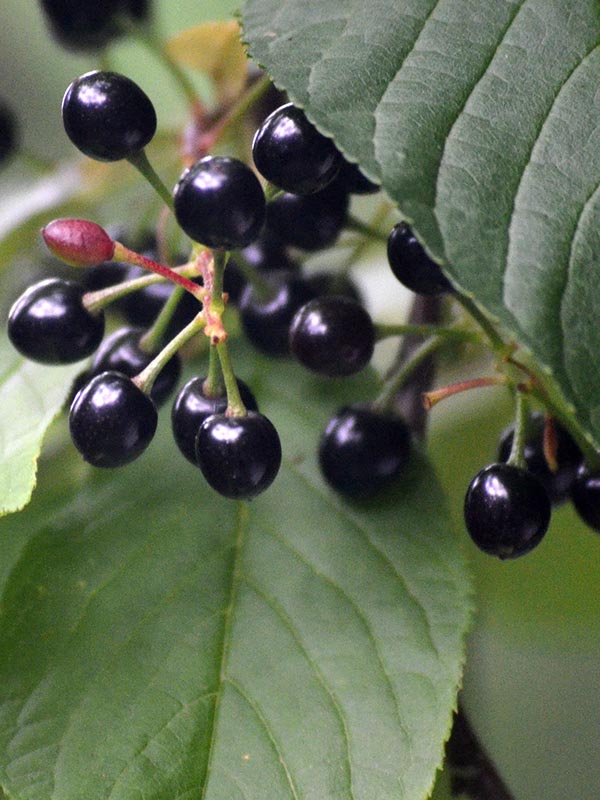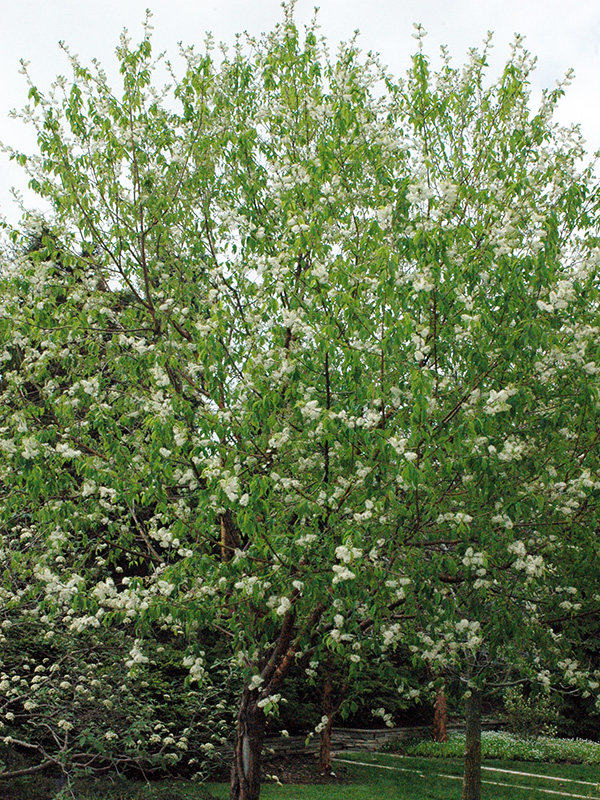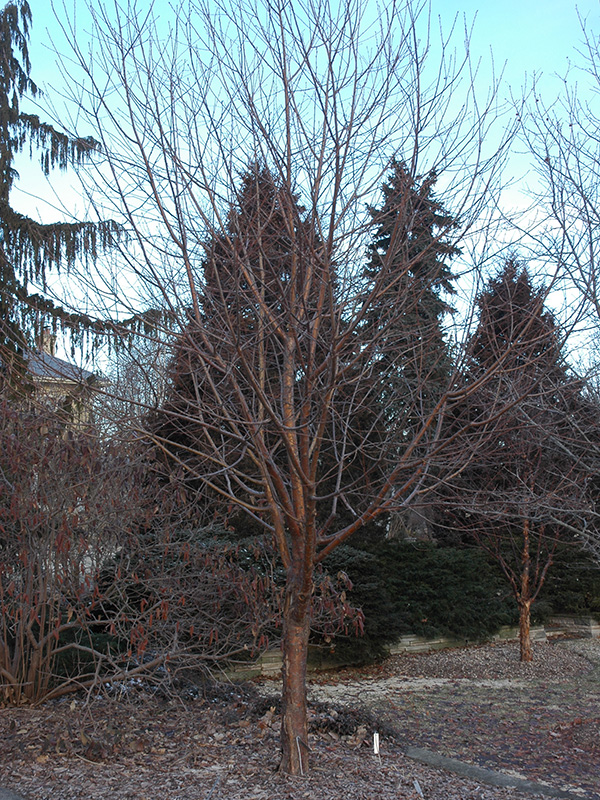
Woody > Prunus > Prunus maackii > Prunus maackii
Prunus maackii
Amur Chokecherry
| Family |
| Rosaceae |
| Genus |
| Prunus |
| Species |
| maackii |
| Category |
| Woody |
| Type |
| Tree (deciduous) |
| Pronunciation |
| USDA Hardiness Zone |
| 2 - 6 |
| Canadian Hardiness Zone |
| 0a - 6a |
| RHS Hardiness Zone |
| H6 - H7 |
| Temperature (°C) |
| -46 - (-18) |
| Temperature (°F) |
| -45 - 0 |
| Height |
| 6 - 9 m |
| Spread |
| 5.5 - 7.5 m |
Photographs
Description and Growing Information
Flowering Period
| General Description |
| A small tree with attractive cinnamon coloured bark with hints of gold and red, which exfoliates nicely, giving the tree a lovely, attractive quality in winter. Rich green leaves and fragrant white flower spikes which produces small black berries. |
| Cultivation |
| The tree will grow in full sun to part shade, and is tolerant of clay, loam and sandy soils, slightly alkaline to acidic and well drained. |
| Shape |
| Pyramidal when young, but grows into a smooth, rounded canopy with dense branching. |
| Growth |
| Fast |
| ID Characteristic |
| A medium sized tree with simple, serrated, oval leaves, and cinnamon to brown coloured shinny exfoliating bark with large lenticels. The tree develops large racemes of fragrant white flowers around 8 cm long which produce small black round berries. |
| Pests |
| Can be susceptible to aphids, scale, and borers in warmer climates. Leaf spot can be a problem as well. Plum Pox: Symptoms may be confused with other diseases/disorders such as nutrient deficiencies or pesticide injuries. PPV symptoms can occur on leaves, flowers and/or fruit. Faint yellow rings or lines may be found on the leaves. PPV generally does not cause plant mortality however, can reduce the plant productivity and longevity. How to Reduce the Spread and Impact of PPV: 1. Propagate vulnerable Prunus trees and shrubs outside of the affected area a. Isolation is important to protect clean plants from future spread of the disease. b. Propagating and growing vulnerable plants away from the virus-infected area reduce the likelihood of the disease spreading any further. This should be as far away from the quarantined area and any potential sources of the virus. 2. Propagate Prunus plants with virus-free Budwood and Rootstock from virus tested mother trees a. This eliminates the propagation link for viral diseases. 3. Inspect vulnerable Prunus for symptoms a. All Prunus shrubs and trees should be visually inspected for symptoms at lease twice per year and conducted by trained personnel familiar with the virus. b. Any plants found to be infected should not be moved or sold and must be reported to the Canadian Food Inspection Agency immediately. c. Inspections should not be conducted in periods of hot weather (temperatures over 30˚C). 4. Manage aphid vectors a. Aphids are extremely attracted to suckers (vegetative shoots at the base of the tree), these should be removed to avoid aphid colonization, feeding or migration. 5. Plant tolerant and resistant varieties a. When available, grow plum pox tolerant or resistant Prunus varieties. |
| Habitat |
| Amur River region of Manchuria, China. Also found in Russia and Korea. |
| Bark/Stem Description |
| Very smooth, shinny bark with very pronounced lenticels. The bark is a cinnamon brown with hints of gold and red and tends to exfoliate nicely, which gives this tree one of its most attractive features. |
| Flower/Leaf Bud Description |
| The buds are 6 mm long, appear individually or running parallel. They are mostly rounded with a slight pointed tip and six exposed scales. |
| Leaf Description |
| Narrowly ovate serrated leaves forming an alternate arrangement on the branch and up to 10 cm long. |
| Flower Description |
| White fragrant flowers which grow on 8 cm long racemes, with 20-30 flowers per raceme. Flowers appear in May as the leaves are developing. Flowers have an unpleasant fragrance. |
| Fruit Description |
| Small, 5-6 mm berries that form red and turn black as they ripen in July. The berries are edible, but bitter in taste. Good for attracting birds. |
| Colour Description |
| In autumn the leaves turn a rich deep yellow colour, moderately attractive in colour. |
| Texture Description |
| Medium in both summer and winter. |
| Notable Specimens |
| Outside University College in the grove of trees on the top of University Hill, at the University of Western Ontario, London, Ontario. Another beside the driveway, near the house in the A.M. (Mac) Cuddy Garden, Strathroy, Ontario. |
| Propagation |
| Propagation can be done by seeds, or cuttings. Seeds need 30 days of warm, followed by 60 days of cold temperatures. Cuttings taken in June/July can be used as well. |
